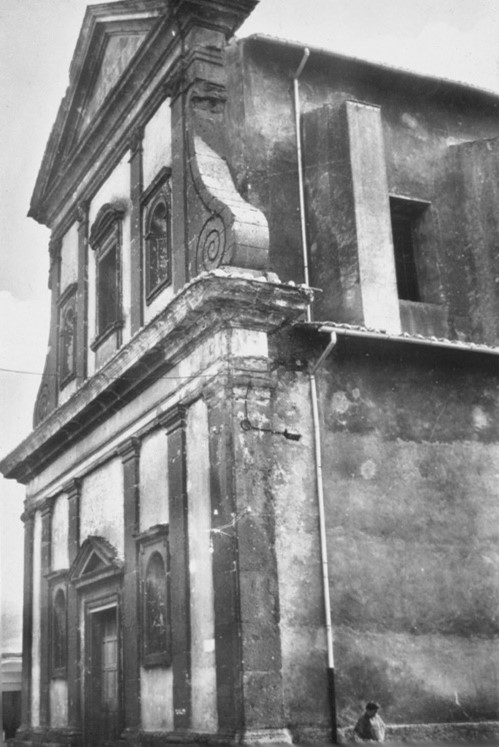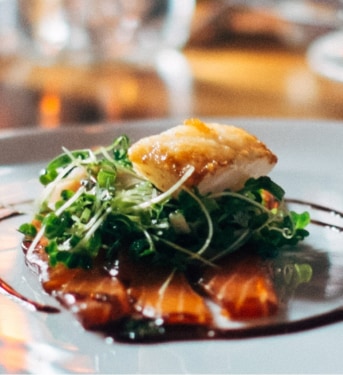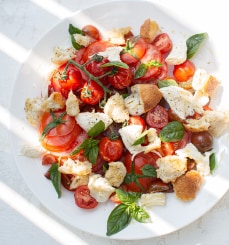In particular, in the narrowing of the interaxis of the pilasters towards the outside, we can see the attempt to round the main front perhaps to create an optical effect capable of causing a sort of “movement”, typical of contemporary baroque facades, or more simply to facilitate access to the side entrances.
The church has a single nave, covered with a barrel vault with a high altar and four side chapels. In plan, the main axes identify a perfectly symmetrical cross, strengthened by the central space created between the chapels, probably used in the past as a side entrance.
In the first chapel on the right, it is possible to see the copy of the painting present in the Pontifical Leonian College of Anagni, by the artist G. Palombi, made in 1893. The painting represents the scene of the miracle of the leaves which took place in Giulianello, in 1706, in the Madonnella countryside church (in via Artena) during which the Blessed Antonio Baldinucci invited the population to a penance procession in the church. The Blessed, during the sermon, compared the leaves that fall from the trees to the souls that fall to Hell. He proved the power of God by exclaiming “Enough!”, and the leaves stopped.
The church of Saint John the Baptist was completed in 1690 and is located at the end of the village, between the last houses and the surrounding walls of the castle: behind it, in fact, it is possible to see the minor arc of the town.
San Giuliano is revered as a patron saint. The feast in his honor was celebrated on February 16 but the date was moved to the last Sunday in April due to bad weather. Legend has it that the saint did not appreciate the change of date and for this reason, even on the last Sunday in April, it usually rains.
February 16 remains a day of celebration for the inhabitants of the town, who recall the pagan tradition of lighting “tiles”, adorned with laurel to honor “San Giulianitto”.
In the small chapel built in 1927 by Don Silvestro Radicchi, there is a sacred image of the Child Jesus sculpted by a devout Franciscan using the Gethsemane olive wood. It was donated to the Ara Coeli church around 1500, where it was customary to bring it, upon request, to the bedside of a seriously ill person to promote healing.
A princess of the Borghese family, probably Camilla Orsini, requested the statue because her cousin, Cardinal Scipione Borghese, was seriously ill. She kept the statuette with her for several days and had a copy sculpted by an artist: the latter was returned to the Capitoline Church.
The original statue, in the night, miraculously returned to the convent, arousing the amazement of all and the two statuettes remained in the church at the end of 1798.
“Lorem ipsum dolor sit amet, consectetur adipiscing elit. Sed auctor turpis eu arcu sagittis, id sagittis justo suscipit.”








